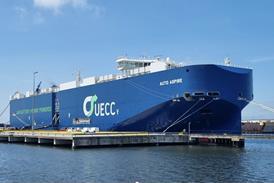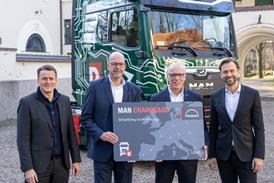A philosophy of lean logistics and continuous improvement is not just for the large carmakers of the world; even smaller logistics providers have found ways to use the principles to improve their business.
The Huppertz Group, a medium-sized, family-owned German logistics provider, will open a logistics centre in 2011 in Kassel to pack and store genuine spare parts for a nearby vehicle distribution centre. It is the fifth centre for the company, all in Germany (the other four are near Cologne). Despite its limited regional approach, and relatively small size, the company has grown well in automotive, particularly in areas of CKD logistics, packaging, spare parts, process improvement solutions, training and consulting.
It is this final set of activities that the company believes has helped it succeed in automotive– and particularly a commitment Huppertz made in 2007 to develop a lean logistics system based on Toyota principles.
 The Huppertz Lean Logistics System follows principles that will be familiar to any student of the Toyota Production System. “First of all we focus on establishing robust standards to secure stable processes. From there on we identify waste and continuously improve to avoid this waste,” explains Peter Huppertz, CEO. “Our target is to create the flow and synchronise processes in every area.”
The Huppertz Lean Logistics System follows principles that will be familiar to any student of the Toyota Production System. “First of all we focus on establishing robust standards to secure stable processes. From there on we identify waste and continuously improve to avoid this waste,” explains Peter Huppertz, CEO. “Our target is to create the flow and synchronise processes in every area.”
The company has a dedicated development, training and consulting centre in Cologne, which it calls the LOG LAB. “The LOG LAB is where we develop our lean logistics approach in detail,” explains Huppertz. “We transform the Toyota Lean Tools for the logistics environment and develop programmes, analyses, audit and training systems that we then consistently implement for us and our customers–including a lot of experimental work.”
The improvement work carried out by the LOG LAB, typically involves, he says, “Many small steps rather than one big one.” For example, the company halved the time taken to process goods in one warehouse from 24 to 12 hours by gradually but dramatically changing the entire layout of the facility. “We changed the placement of the booking stations, and we reduced distances travelled by forklifts. In a year, that allowed us save to 50% of the space used in the building and had a direct effect on labour costs.”
Elsewhere, improvements to receiving processes, including detailed pre-receiving routings and the use of smarter scanning technology has allowed the company to cut the receiving time for a truck by more than 50%. Better control also means that 90% of inbound deliveries take place within their planned time window.
These improvements, says Huppertz, are as much about the way the company is run as the processes it uses. “Leaders have to be there physically. They have to improve themselves continuously. Communications is a challenge and very important. It must be direct, ‘eye to eye’, daily, clear, understandable and motivating. And we have to be willing to put a question mark over every standard we establish–to be open to changes for the better.”
In its ongoing quest for performance improvement, Huppertz is increasingly applying its lean skills to its customer’s processes as well as its own. “For the first one or two years, lean is all about your own processes, but then you automatically go past the interfaces to different areas of your customers’ inbound and outbound supply chains,” says Huppertz. For a logistics provider to be able to do this he notes the key is the use of persuasion rather than force.
“Often you don’t have direct contractual relationships with the other companies in the chain. Inbound carriers are a good example. As there is no direct power, you simply have to be more convincing in the ideas and concepts you demonstrate. And you have to take the lead, develop concepts and ideas, communicate, organise, coordinate the right people at the right time and push this process, which is always extra work.”
It is collaborative processes, however, that Huppertz is convinced will offer the key to the cost and time savings the industry will need if it is to thrive in tomorrow’s increasingly competitive environment.
“For example, our company carried out a collaborative value stream mapping exercise with a large cross-functional team to look at the way packaging specifications were created,” Huppertz recalls. “That team was able to reduce the time required to create the specifications from six weeks to 24 hours: a huge saving for everybody.”































